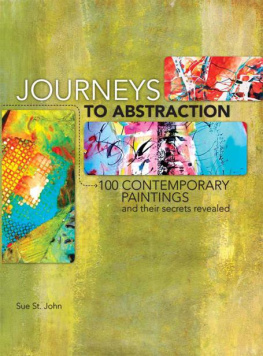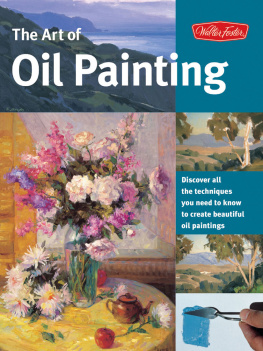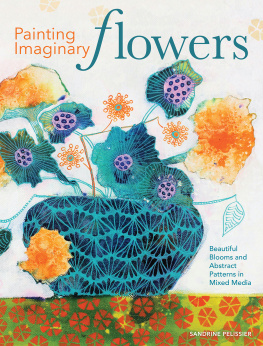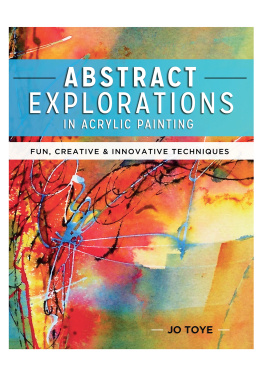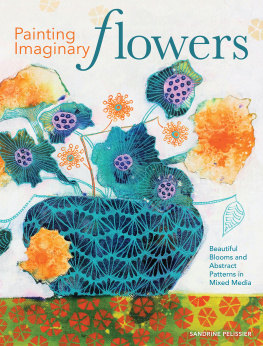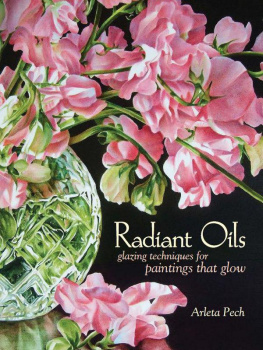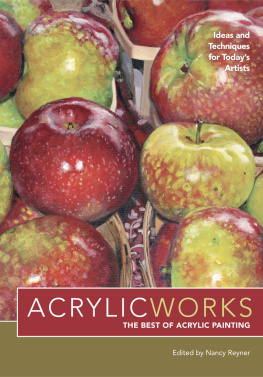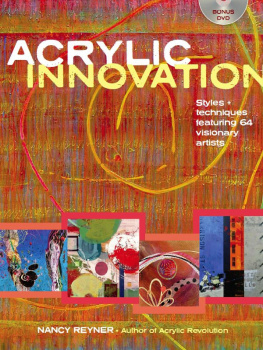Sign up for our newsletter and receive special offers, access to free content, and information on the latest new releases and must-have art resources! Plus, receive a coupon code to use on your first purchase from NorthLightShop.com for signing up.
Acrylic and collage on Arches 140-lb. (300gsm) cold-pressed paper
Introduction
Abstract painting can be challenging, and the biggest challenge is to do it well. Often, an abstract painting will not have a recognizable object to inform the viewer what the paintings subject matter is. But the viewer can respond to the paintings colors, shapes and values, and sense what the artist was trying to convey. The viewer can feel the mood of the painting. We dont have to know what a painting is if we know how it makes us feel.
Each abstract artist approaches painting from a different direction. Some artists simplify their images. Others severely distort simple shapes. And some artists limit the amount of information they include in their painting to a mere suggestion of their subject matter. Clearly, there is more than one way to paint abstract works. The choices are vast and nothing is wrong.
Have you ever been curious about another artists process, and maybe even want to try it out yourself? Artists, myself included, learn from each other by observing how other artists do what they do. This book offers you the opportunity to peek through other artists studio keyholes to view the creative process of abstract art. It is a source of ideas, techniques and methods from various abstract artists. Studying each artists working processes can help you develop your own techniques for your abstract works. Then you can strike out on a path entirely of your own and develop your own style.
If you do not have drawing or painting experience, you can still learn the abstract methods without any complicated techniques. Even if you prefer to paint reality, abstract art can help you get motivated to develop your individual style.
So, lets start exploring the creative process of abstract art.
Choices When Painting Abstracts
Why choose to paint abstractedly in the first place? Abstract art can be incredibly liberating. For many artists, it is a form of therapy and a way for them to deal with emotions long pent up within themselves. Abstraction is free form and fluid and can be comprised of just about anything. The only limits are your imagination and your willingness to explore your own inner psyche.
So, where do you begin? When painting abstractedly, there are many things to consider. In this section, well explore some of the most important choices to consider in creating abstract art.

Gucci Poppies Karen Kierstead Miller
Realism vs. Abstraction
Realism (also known as representational art) is just thatart representing the world as it exists, with the subject of the painting clearly known. With abstract art, the subject may be very difficult to figure out, or it may not be known at all. Abstract art is less about the subject than the emotions and motivations the subject evinces.
In many ways, one could say that Realism and Abstraction are polar opposites. Realism is concerned with rendering an image as closely as possible to what you see with your eyes, while abstraction is about expressing concepts rather than exact depictions. Abstraction relies on ideas, emotions and themes, while Realism relies on the world presented before you.
The Realist Movement in French art began in the 1850s. The Realists painted people, places and objects as they appeared, with little to no stylistic editing. They relied on scientific logic and what could be observed with their own eyes. Realists studied how subjects were lit, and sought to portray with great accuracy the way light played upon whatever or whomever they were painting. They also concentrated on painting ordinary things encountered in everyday life. The Realist Movement elevated the mundane to become worthy subjects for great art.
Abstract art didnt really come into its own until the late nineteenth and early twentieth centuries. Until that time, most art was representational in nature. Movements like Impressionism, Cubism, and Fauvism contributed greatly to the development of abstract art.
It has been said that abstract art frees the viewer from the constraints imposed by realistic images. Since there is nothing recognizable in the most abstract pieces, the human mind isnt focused on rendering knowable objects. Instead, the mind can roam and the emotions felt can be examined.
Abstraction and Realism can be said to exist on a continuum, with absolute Realism on one end, and complete Abstraction on the other end. In between are works that can include elements of both styles. For example, you can have a painting where almost everything is rendered in exact detail and is true to real life, except for the focal point of the piece. Conversely, you can have a painting that is mostly a suggestion of forms, except for one part that is rendered exactly true to life.
Both Realism and Abstraction have a place in the art world. Neither one can really be said to be better than the other. It is simply a matter of personal taste. Some people like only representational or realistic painting, while others prefer the most abstruse of the abstract works. Still others may find something to like in both forms.
Some people believe that abstract art is a higher form of expression than more realistic art, but this is merely opinion. You could debate endlessly over the merits of each style. What not in question is that both styles are viable works of art.
How you decide to use Abstraction and Realism in your artwork is up to you. It depends on the goal of your work, and it most definitely depends on your mood and the emotions youre feeling. All of these are integral parts of any piece of artwork, whether abstract or realistic.
Lets say you decide that you want to paint the way your garden looks in the spring. Will you use only the colors that are present in your garden? Will you create just the slightest suggestion of form? Will you try to capture an impression of how your garden looks, or will you paint it as if it were a photograph? Pick up a paintbrush and some paints and find out!

